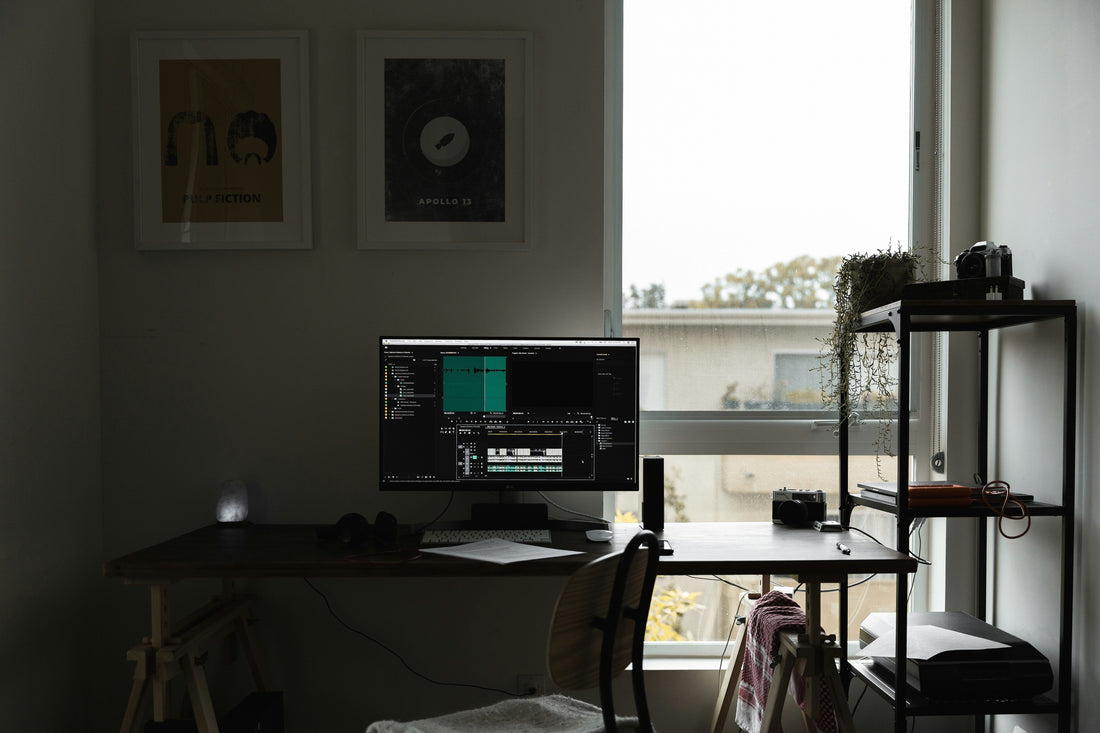
How to Build a Distraction-Free Desk Setup
Share
I. Introduction
In today’s digital world, distractions are everywhere—especially at your desk. A cluttered workspace can quietly chip away at your ability to focus, stay productive, and think clearly. Building a distraction-free desk setup isn’t just about aesthetics—it’s a powerful strategy to reclaim your focus and boost your daily efficiency.
II. Assessing Your Current Desk Setup

Before making changes, evaluate how your current setup is affecting your performance.
Common distractions may include:
- Tangled cables and unorganized tools
- Frequent notifications from devices
- Visual clutter like unused notebooks or decorations
Ask yourself:
- Is everything on my desk serving a purpose?
- Am I frequently interrupted or fidgeting with non-work items?
This awareness is the first step in creating a cleaner, more intentional space.
III. Essential Elements of a Distraction-Free Desk
✔ Minimalist Design
Keep only what you use daily. A clear surface promotes mental clarity and reduces visual noise.
✔ Ergonomic Considerations
Proper chair height, monitor elevation, and hand positioning reduce fatigue and help maintain attention.
✔ Lighting and Comfort
Use adjustable lighting that mimics natural light. A warm lamp placed strategically can reduce glare and eye strain.
👉 Explore our [Smart Desk Lighting] collection to find lighting solutions designed to enhance comfort and productivity.
IV. Tech and Tools for a Productive Workspace

Declutter Digital Devices
Hide cables, use wireless peripherals, and remove unnecessary gadgets. Consider a monitor stand with storage compartments.
Noise-Canceling Solutions
Use white noise machines or noise-canceling headphones to eliminate background distractions.
Apps & Tools
Consider using physical focus timers, digital task managers, or apps that block distractions during deep work sessions.
👉 Check out our [Smart Timers & Pomodoro Tools] collection for science-backed focus solutions.
V. Organizational Strategies
Cable Management
Use cable organizers, clips, or under-desk trays to keep wires out of sight.
Storage Solutions
Invest in drawer dividers, stacking bins, or desktop trays to categorize and streamline your tools.
Desk Layout Optimization
Arrange items based on frequency of use—keep essentials within reach, and store away occasional items.
👉Explore tools from our [Organization & Declutter] collection to streamline your workspace.
VI. Creating a Focused Environment
Workspace Boundaries
Set physical and mental boundaries between work and leisure—especially in a home office.
Mindfulness & Psychology
Adding elements like calming scents, natural textures, or soft soundscapes can shift your brain into focus mode.
Personalization with Purpose
Limit decorations to a few meaningful items that inspire calm and motivation—like a small plant or photo.
VII. Maintenance and Continuous Improvement
Workspace Audits
Schedule monthly clean-ups to evaluate what’s useful and what’s not. Clutter tends to creep back in over time.
Adapting to Change
As your workflow evolves, your setup should too. Regularly update your tools and layouts to reflect current needs.
VIII. Conclusion
A distraction-free desk setup is more than a trend—it’s a commitment to clarity, intention, and efficiency.
By optimizing your space for minimal distractions and maximum focus, you create the conditions for better thinking, deeper work, and less stress.
Start small. Choose one change today—your focus will thank you tomorrow.
